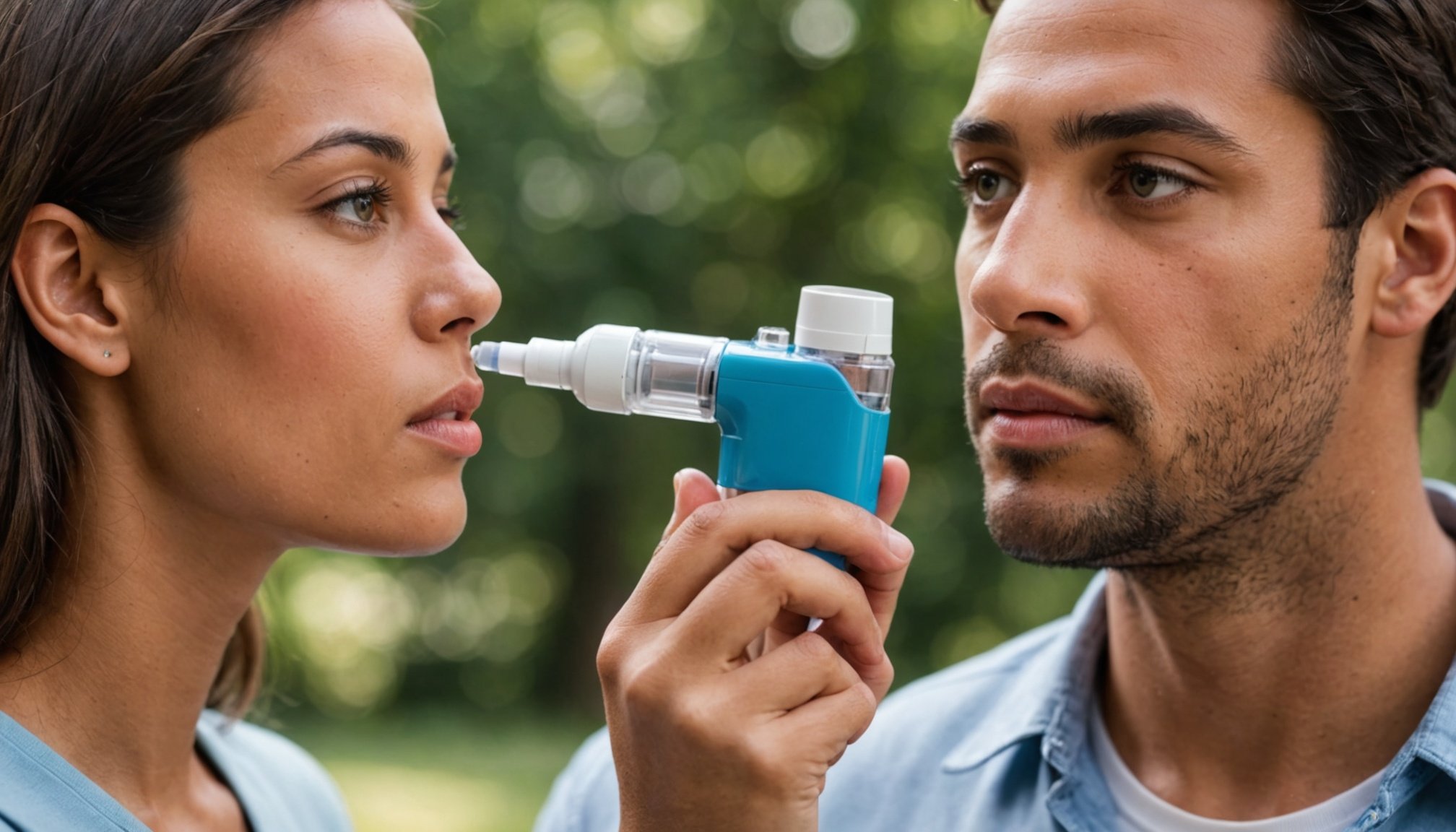Unveiling the Pros and Cons of Smart Inhalers for Superior Asthma Management
Asthma, a chronic respiratory condition affecting millions worldwide, requires meticulous management to ensure the quality of life for those affected. Traditional inhalers have been the cornerstone of asthma treatment, but the advent of smart inhalers has revolutionized the way we approach asthma care. In this article, we will delve into the pros and cons of smart inhalers, exploring how these devices are transforming asthma management.
What are Smart Inhalers?
Smart inhalers are advanced versions of traditional inhalers, equipped with electronic monitoring and data collection capabilities. These devices are designed to track inhaler use, provide real-time feedback, and offer insights into inhalation technique and medication adherence.
In parallel : Combatting the Heart Risks of Prolonged Sitting: Effective Strategies for Prevention
Examples of Smart Inhalers
Companies like Digihaler and Propeller are at the forefront of this technology. Digihaler offers smart inhalers such as AirDuo and ProAir, which are designed for different age groups and track inhaler usage frequency, inhalation strength, and provide visual feedback on symptom control[1].
Propeller, on the other hand, offers attachable sensors that can be used with any inhaler, providing features like inhalation counters, symptom flare-up analysis, location tracking, and air quality analysis[1].
Also read : Ultimate Starter’s Guide: Effortlessly Embrace a Plant-Based Diet
Pros of Smart Inhalers
Smart inhalers bring several benefits to the table, making them an attractive option for both patients and healthcare professionals.
Improved Medication Adherence
One of the primary advantages of smart inhalers is their ability to track medication use. According to a study published in a medical journal, patients using smart inhalers showed significantly better adherence to their prescribed treatment plans compared to those using traditional inhalers[3].
- Real-time tracking of inhaler use
- Reminders for medication administration
- Alerts for missed doses
- Detailed reports for healthcare professionals
Enhanced Self-Management
Smart inhalers empower patients to take a more active role in their asthma care. By providing data on inhaler use and symptom control, these devices help patients understand their condition better and make informed decisions about their treatment.
- Personalized feedback on inhalation technique
- Insights into symptom patterns and triggers
- Customized treatment plans based on collected data
- Integration with other health monitoring devices
Better Asthma Control
The data collected by smart inhalers can be invaluable in managing asthma symptoms. For instance, a research group found that patients using smart inhalers experienced fewer asthma exacerbations and improved lung function compared to those using traditional inhalers[3].
- Early detection of symptom flare-ups
- Adjustments to treatment plans based on real-time data
- Reduced need for reliever therapy
- Improved quality of life
Cons of Smart Inhalers
While smart inhalers offer numerous benefits, they also come with some drawbacks that need to be considered.
Cost and Accessibility
Smart inhalers are generally more expensive than traditional inhalers, which can be a significant barrier for many patients. The cost of the device, along with the need for regular maintenance and potential replacement of electronic components, can be prohibitive.
- Higher upfront cost
- Ongoing maintenance and replacement costs
- Limited accessibility in low-resource settings
Complexity of Use
Smart inhalers can be more complex to use compared to traditional inhalers, especially for older patients or those who are not tech-savvy. This complexity can lead to frustration and decreased adherence.
- Steeper learning curve
- Potential for technical issues
- Need for regular software updates
Privacy Concerns
The electronic monitoring and data collection features of smart inhalers raise privacy concerns. Patients may be hesitant to use devices that track their medication use and health data, especially if they are unsure about how this data will be used.
- Concerns about data privacy and security
- Potential for data misuse
- Need for clear guidelines on data handling
Comparative Analysis of Smart and Traditional Inhalers
Here is a comparative table highlighting the key differences between smart and traditional inhalers:
| Feature | Smart Inhalers | Traditional Inhalers |
|---|---|---|
| Medication Tracking | Real-time tracking, reminders, and alerts | Manual tracking, no reminders or alerts |
| Data Collection | Collects data on inhaler use, symptom control, and inhalation technique | No data collection |
| Feedback | Provides personalized feedback and insights | No feedback or insights |
| Integration | Can integrate with other health monitoring devices and digital health platforms | No integration capabilities |
| Cost | Generally more expensive | Less expensive |
| Complexity of Use | More complex to use | Simple to use |
| Privacy Concerns | Raises privacy concerns | No privacy concerns |
| Maintenance | Requires regular maintenance and software updates | Minimal maintenance required |
| Accessibility | Limited accessibility in low-resource settings | Widely accessible |
Practical Insights and Actionable Advice
For patients considering the use of smart inhalers, here are some practical insights and actionable advice:
Consult Healthcare Professionals
Before switching to a smart inhaler, it is crucial to consult with healthcare professionals. They can help determine whether a smart inhaler is the right choice based on the patient’s specific needs and condition.
Understand the Device
Take the time to understand how the smart inhaler works. Read the manual, watch tutorials, and ask questions to ensure you are comfortable using the device.
Address Privacy Concerns
Discuss privacy concerns with your healthcare provider. Understand how your data will be used and ensure that you are comfortable with the data collection and handling practices.
Monitor and Adjust
Regularly monitor the data collected by your smart inhaler and adjust your treatment plan accordingly. This can help in better managing asthma symptoms and improving overall health.
Future of Smart Inhalers
The future of smart inhalers looks promising, with ongoing research and technological advancements aimed at addressing the current limitations.
Integration with Digital Health
Future smart inhalers are expected to be more integrated with digital health platforms, allowing for comprehensive management of respiratory conditions. This integration could facilitate better tracking of disease progression and treatment efficacy, empowering both patients and physicians to make more informed decisions[3].
Improved Patient Accessibility and Education
There is a growing focus on improving patient accessibility and education. This includes making smart inhalers more user-friendly and providing better educational resources to help patients understand and manage their condition effectively[3].
Smart inhalers represent a significant leap forward in asthma care, offering improved medication adherence, enhanced self-management, and better asthma control. However, they also come with challenges such as higher costs, complexity of use, and privacy concerns. By understanding the pros and cons and taking practical steps to address these issues, patients and healthcare professionals can harness the full potential of smart inhalers to improve asthma management.
As a scholar once noted, “The integration of technology into healthcare is not just about the devices; it’s about how these devices can empower patients and healthcare providers to make better decisions and improve health outcomes”[3].
In the context of asthma care, smart inhalers are a powerful tool that can significantly enhance patient outcomes. By embracing these devices and addressing their limitations, we can move closer to achieving superior asthma management and improving the quality of life for those affected by this chronic condition.








